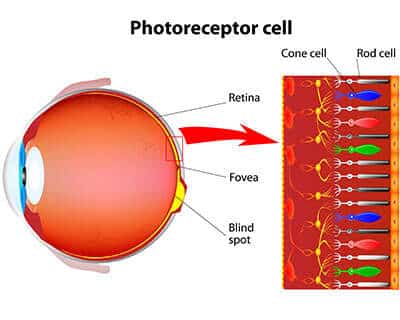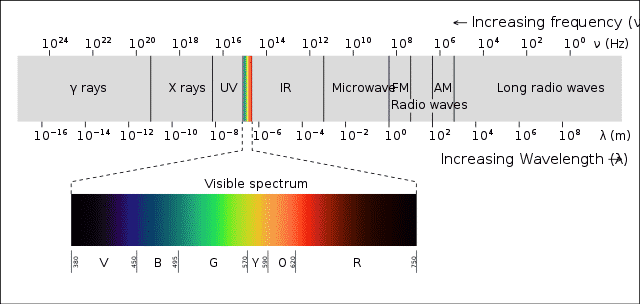Vision is an important requirement for any animal. Many animals might even die if they lose their eyesight. So, in this blog post, let’s find out how important vision is for hamsters. Let’s also find out if hamsters are really blind. If they aren’t blind, how good is their eyesight? How can you find out if your hamster is blind? What to do if your hamster is really blind? Keep reading to find answers to these questions.
Are hamsters blind?
No, hamsters aren’t blind.
At birth, like the babies of many animals, hamster babies are also blind. But once they turn two weeks old, they open their eyes and start to see the world around them. But unlike humans and other animals, a hamster’s eyesight isn’t that good. So, if you stand still in front of your hamster, he won’t be able to see you. Therefore, you should approach him slowly. If you approach him suddenly, he won’t sense you in time. So, he will get scared and become defensive. If that happens, he wouldn’t want to play with you. He wouldn’t let you hold him either. Hence, if you want to hold your hamster and play with him, you should approach him from the front, slowly.
And even while you are holding your hamster, you should be extra careful. Hamsters are extremely near-sighted. They can see only a few inches past their noses.
Moreover, a human being’s eyes are located near each other. So, we can perceive distances easily. But a hamster’s eyes are farther apart. This helps them detect threats better at shorter distances but reduces their spatial vision,i.e., their ability to judge distances. So, hamsters have a terrible perception of distance and depth. Hence, your hamster might jump from your hand, thinking that his cage is just inches away. For the same reason, you should never let your hamster stand on your shoulder or head either.
You should also never let your hamster play on a table. Because, once he reaches the edge of the table, he might look down and not perceive how tall the table is. So, he might jump from the table and injure himself, even breaking a few bones.
You should also make sure that your hamster’s cage is properly secured, without any holes or openings. If not, your hamster might jump from a higher level in his cage thinking that it is a shortcut and injure himself.
Can hamsters see in the dark?
There is a difference between seeing in the dark and seeing in complete darkness. No animal can see in complete darkness. But then, there is hardly a time when it is completely dark. Even at night, there is moonlight. And even in the absence of moonlight (on a no moon day), there is still starlight, even if it isn’t that bright. For humans, it would be very difficult to see in such a situation. But for many nocturnal animals, this starlight is more than enough to find their prey. Some animals, like Pit Viper, have even developed infrared vision to help them see in near-total darkness (Source: The Cold Wire).
But hamsters are not nocturnal animals. They are crepuscular,i.e., they are active at dawn and dusk, not at night or during the day. So, they cannot see when it is completely dark. Their eyesight is at its best in dim light.
Can hamsters see in bright light?
No, hamsters cannot see that well in bright light. The pupils of human beings can adjust the amount of light entering the eyes. So, we can see well both in bright and dim lights. But a hamster’s pupils haven’t evolved to perform that function efficiently. So, they cannot see well in bright light. Indeed, they are almost blind in bright sunlight.
Are hamsters colorblind?
To find out if hamsters are colorblind, we must understand what colorblindness is. The retinas of animals contain two types of cells – rods and cones. Whenever our eyes look at something, rods and cones work on the incoming light, giving our brain a complete picture of what the eyes saw. But even though both these types of cells detect light, there is a big difference in what they detect.

Rods detect the level of incoming light. They are 500 to 1,000 times more sensitive to light than cones. The primary function of rods is to help us see in darkness. Nocturnal animals have more rods than cones.
On the other hand, cones cannot help us see in dim light. They are most active in high levels of light and help us see colors and fine details. Cones can be further divided into three types – Red-sensing cones, Green-sensing cones, and Blue-sensing cones. These cones can recognize the long, medium, and short wavelengths in the visible light spectrum.

Color blindness doesn’t necessarily mean that the person/animal can see everything only in black and white. Indeed, color blindness can have three stages:
- Difficulty in distinguishing colors in dim light
- Difficulty in distinguishing certain colors in all levels of light (both bright and dim lights)
- Difficulty in distinguishing all colors in all levels of light, as a result of which everything is seen in shades of grey
Hamsters (and many other mammals) don’t have three types of cones as humans do. Many hamsters have only one or two types of cones. So, they can see just one or two colors and hence are considered color blind.
A study on Syrian hamsters and Siberian hamsters indicates that Syrian hamsters only have one type of cone, whose sensitivity peaks at 506nm (Green-Yellow region) (Source: PubMed). So, they can see only one color (mostly) and are considered monochromatic.
On the other hand, Siberian hamsters have one additional type of cone, whose sensitivity peaks at 360nm (ultraviolet region). So, they can see ultraviolet light as well. But it is not clear what advantage this brings to a Siberian hamster. Maybe it helps them see better during the day and at daybreak when ultraviolet light is abundant. So, they can easily follow their urine traces (glows under ultraviolet light) to find their way back to their burrows. But UV light is also visible to their predators. So, it is not clear what advantage this brings to a Siberian hamster.
How does a hamster see or sense its environment?
For humans, vision is the most important sense for navigating through the world. We live in big spaces and drive vehicles for which good eyesight is inevitable.
But wild hamsters spend most of their life underground, in their burrows. Down there, in those network of tunnels, it is very dark. So, hamsters have evolved to not depend on their eyesight to figure out where they are. Instead, they use their sensitive whiskers and their legs to sense their surroundings. Moreover, their other senses, like hearing and smell, are very sharp as well. In addition to that, they can remember places and routes very well. So, their poor eyesight doesn’t affect hamsters that much.
Just like humans have evolved to rely on their vision much more than their other senses, hamsters have evolved to rely on their other senses much more than vision.
Ability to sense movements
Hamsters’ whiskers and paws can sense vibrations.
The whiskers of animals are not just hair; they are not just for show. They serve important functions.
For example, each whisker of a hamster is connected to hundreds of nerve cells (Source: Wikipedia). These cells are connected to eight types of mechanoreceptors that sense mechanical pressure or distortion. Simply put, a hamster can sense when an object slightly touches any of its whiskers.
Whiskers (Long mystacial whiskers, located where a mustache would be) can help hamsters get an idea of the space around their face. They help wild hamsters figure out how big a hole is so that they can decide if they can go through it. If a wild hamster is chased by a predator and chooses to go through a hole that is too small for him, he might get stuck in it and end up being eaten by the predator. So, whiskers play a vital role in the survival of wild hamsters.
Whiskers (Small mystacial whiskers that point downwards) can help hamsters identify objects that lie on the ground. It can help a hamster avoid obstacles when it is too dark to see or if he becomes blind.
Whiskers can also help hamsters sense vibrations in the air and changes in air current (Source: Science daily). The air current changes when an obstacle like a stone or a tree is nearby. An approaching predator can also lead to a change in air current (Source: Purina). Moreover, even if an approaching predator walks stealthily towards a hamster, it might still create small noises (like the rustle of leaves) while walking on the forest floor. These sounds cause vibrations in the air, which might be picked up by the whiskers of wild hamsters.
Thus, whiskers not only help wild hamsters stay oriented in their environment but also play an important role in their survival (Source: Lazy paw vet). So, you should never cut or trim your hamster’s whiskers.
Hamsters’ paws can also sense vibrations.
Do you now understand why your hamster can easily sense when you move near his cage? It is because your every movement causes a small vibration, which would be picked up by your hamster’s whiskers and paws. Even if you just stand in front of his cage, your presence might still lead to a change in air current, which would alert your hamster to your presence. So, even if he doesn’t see you, he knows that you are there.
So, if you are in the same room as your hamster, try not to make sudden quick movements. Even if you do not intend to scare your hamster, if you move suddenly, you would set off a vibration that might scare your hamster and stress him out.
Sense of hearing
Hamsters have an excellent sense of hearing when compared to humans. Humans can only hear sounds in the range of 20Hz to 20kHz. But hamsters can hear a wider range of sounds, ranging from 96Hz to 46.5kHz.
Moreover, a human’s hearing ability is at its best at low frequencies and high frequencies (from 250Hz to 8kHz). But a hamster’s hearing ability is at its best only at high frequencies (from 6kHz to 12 kHz). At low frequencies, his hearing is terrible. Even though this might sound like a huge disadvantage, it is actually a big advantage for hamsters. By having a poor low-frequency hearing, hamsters filter out the ambient sounds in the environment as well the sounds caused by their own movement, both of which tend to have low frequencies. Thus, they are more sensitive to high-frequency sounds made by predators.
At high frequencies, hamsters can hear far better when compared to humans. For example, a 60dB sound at 12kHz sounds 16 times louder for hamsters when compared to humans. So, you should be wary about which home appliances you use and how loud they are because many of them will sound much more louder to your hamsters.

The loudest sound a hamster can safely hear is 100dB. Beyond this limit, a hamster’s hearing can get damaged. If a hamster hears a sound louder than 100dB for ten minutes, he may get Tinnitus (Ringing in the ears). If he hears the same sound for more than an hour, he can become permanently deaf.
But one good news is that the loudness of a sound decreases with distance. As the distance to the sound source doubles, its loudness decreases by 42%. So, if you must use a loud device (Eg., a Hairdryer), increase its distance to your hamster. Better yet, use it in a room where your hamster is not there. If you must vacuum the room where your hamster’s cage is, first move the cage to another room. Then bring the cage back to its original location after you finish vacuuming the room.
You can also take several other measures to make sure your hamster’s hearing doesn’t get damaged. You can find them in this blog post about hamsters’ hearing.
Sense of smell
Hamsters have an extraordinary sense of smell.
Most animals are smelly, i.e., their bodies have an odor. However, this scent is too faint for a human’s nose to pick it up. But a hamster’s sense of smell is strong enough to catch this scent. Moreover, hamsters can even smell scents that are up to 25 meters away. So, even if a predator is 20 meters away and a hamster can’t see it, he will be able to smell the predator and run away.
A hamster’s superior sense of smell is already a great advantage for him to survive in the wild. But nature has endowed him with yet another weapon, which, in combination with his great sense of smell, provides an even bigger advantage to him.
This weapon is his scent glands. A hamster has several scent glands on his body – on his ears, on his flanks, and within his eyes. These scent glands produce chemicals called pheromones. When he rubs his body against an object, like a block of wood, his body leaves a trace of pheromones on this object. Moreover, a hamster’s urine, saliva, fecal matter, and vaginal secretions, too, contain pheromones.
So, when a hamster goes outside to forage food, he leaves traces of his pheromones everywhere. Therefore, even if he wanders a considerable distance away from his burrow, he can just follow the trail of scent left by his pheromones to find the way back to his burrow.
The type of pheromone released can also differ based on a hamster’s emotion. So, just by smelling the pheromones of another hamster, a hamster would be able to know if the other hamster is aggressive or scared and if it’s his relative (partner, child, or parent) or not. Pheromones can also tell a hamster if the other hamster is a female and if she is ready for mating.
So, as you can see, a hamster’s superior sense of smell is a great compensation for his terrible eyesight. But precisely because hamsters have a great sense of smell and humans don’t, we should be extra careful in what we bring near our hamsters. Since hamsters can smell scents that humans cannot, if you can smell something, it is probably overwhelming for your hamster.
The strong smell will temporarily confuse your hamster. In human terms, it is like flashing an extremely bright light in front of your eyes to blind you for a few minutes. You will not only get blinded for these few minutes but also get stressed because you know that someone can hit you and kill you during this time. The same is true for your hamster as well. The sudden overwhelming smell can confuse and stress your hamster out.
Therefore, you should take the necessary measures so that your hamster doesn’t get stressed out. But if you don’t know what measures to take, you don’t have to worry. We have discussed these measures in detail in this blog post on hamsters’ sense of smell.
Ability to remember routes and locations
A hamster might have poor eyesight. But to compensate for that, he has a very good spatial memory. So, he can remember routes and locations very well after using them a few times. Therefore, even if your hamster becomes blind, it wouldn’t affect him much because he would’ve memorized his cage very well and could navigate from one location in his cage to another.
Is your hamster blind?
How to find out if your hamster is blind?
There are several eye-related problems that can make your hamster blind (Source: Wikihow). So, the most important thing is to look for symptoms. Even though the symptoms can vary depending on the eye condition that your hamster has developed, the common symptom for all these conditions is clumsiness. If your hamster becomes clumsier than usual, or if he keeps hitting himself on objects or falls down all the time, he might be blind.
Besides these common symptoms, you can also look for illness-specific symptoms (see below). If you pick up on these symptoms early on, you may be able to keep your hamster from going blind.
- Glaucoma – Glaucoma is an eye condition that damages the optic nerve (Source: Mayo Clinic). Similar to humans, hamsters can also develop Glaucoma. This is a condition that is hard to recognize and could lead to complete blindness if not treated early. If your hamster has a hatred towards light or if his eyes appear bulged, there is a chance that it could be Glaucoma. So, take him to the vet without delay.
- Cataract – If your hamster’s eyes start developing a milky appearance, it could be cataracts. Even though there is no cure for cataracts, and it could lead to complete blindness, it usually occurs only in older hamsters.
- Exophthalmos – This is a condition where your hamster’s eye may appear to be enlarged and protruding from its eye socket. The eyes may also appear red or have a watery discharge. If this happens, you should immediately take your hamster to a vet because Exophthalmos can lead to complete blindness.
- Conjunctivitis – This condition can happen if a foreign object enters your hamster’s eyes and causes irritation. It could also be caused by a bacterial infection. Your hamster’s eyes can become swollen, and his eyelids might be stuck together filled with a crusty discharge. So, his eye(s) might be closed, and he may not be able to open it. You can try to loosen your hamster’s eyelids by wiping the discharge with soft, moist cotton. This condition doesn’t generally lead to blindness. But if wiping the discharge doesn’t help, you should take your hamster to a veterinary doctor.
What to do if your hamster is blind?
The first thing you should understand is that becoming blind doesn’t affect a hamster much. For a human being, vision is the most important sense. But for a hamster, vision is not the most important sense. His eyesight is already terrible, to begin with. So, becoming blind wouldn’t affect his lifestyle much. But you can take certain measures to help your hamster if he becomes blind (Source: Five little hams).
- Don’t change anything in your hamster’s cage. A hamster has an excellent spatial memory. He would have memorized everything in his cage. So, he would be capable of navigating from one place to another even without his eyesight. Therefore, if you change anything in his cage, it might cause him great confusion.
- If your hamster keeps hitting an object (like a hamster toy) again and again while moving in his cage, remove that object. You can also mark the most common objects he uses with the smell of food items so that he can easily find his way around the cage.
- A blind hamster would be defensive because he wouldn’t be able to see anything at all. So, don’t surprise him by trying to pick him up suddenly. Instead, start talking to him slowly. Then, slowly tap on his bedding and rustle it. This way, he will know that you are coming and wouldn’t be surprised and get defensive thinking that you are a predator.
- You can also give him a treat, and while he is eating that, gently pat him on the back and then pick him up.
- Some hamsters may not like human touch at all once they become blind. So, you should just let them do their daily activities and never try to pick them up.
Summary
Hamsters are not blind. But their eyesight is terrible. They can see only up to a few inches in front of their noses. They sense their environment using their other senses, namely, smell, hearing, and touch. Their spatial memory is also pretty good. So, they can remember places and routes very well.
Therefore, even if a hamster loses his eyesight, it is not the end of the world for him. He can still survive, even though life would get a little bit difficult for him. But as a hamster owner, you can take some measures to make his life easier. If you can do that, your hamster will be able to live a normal life once again.



